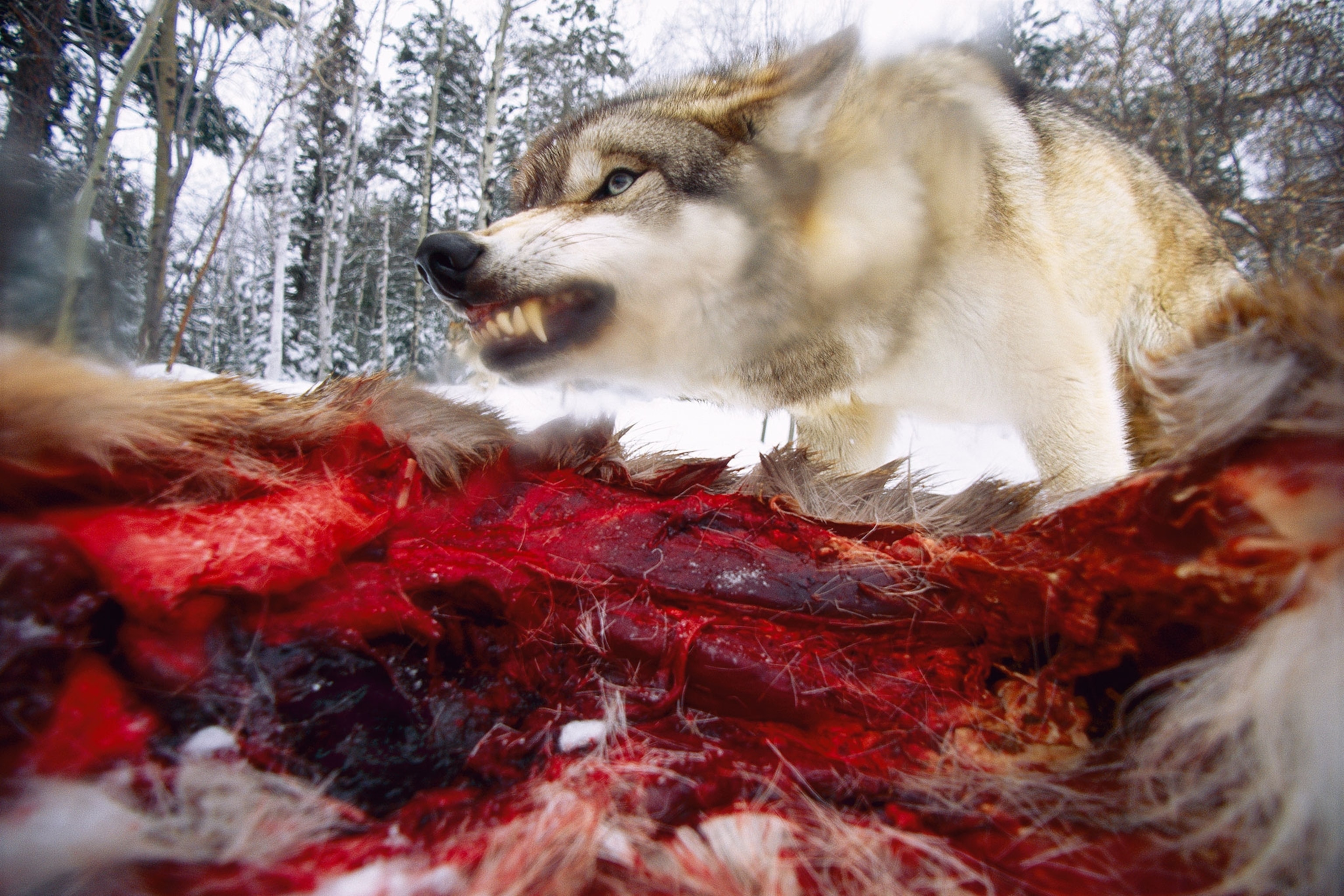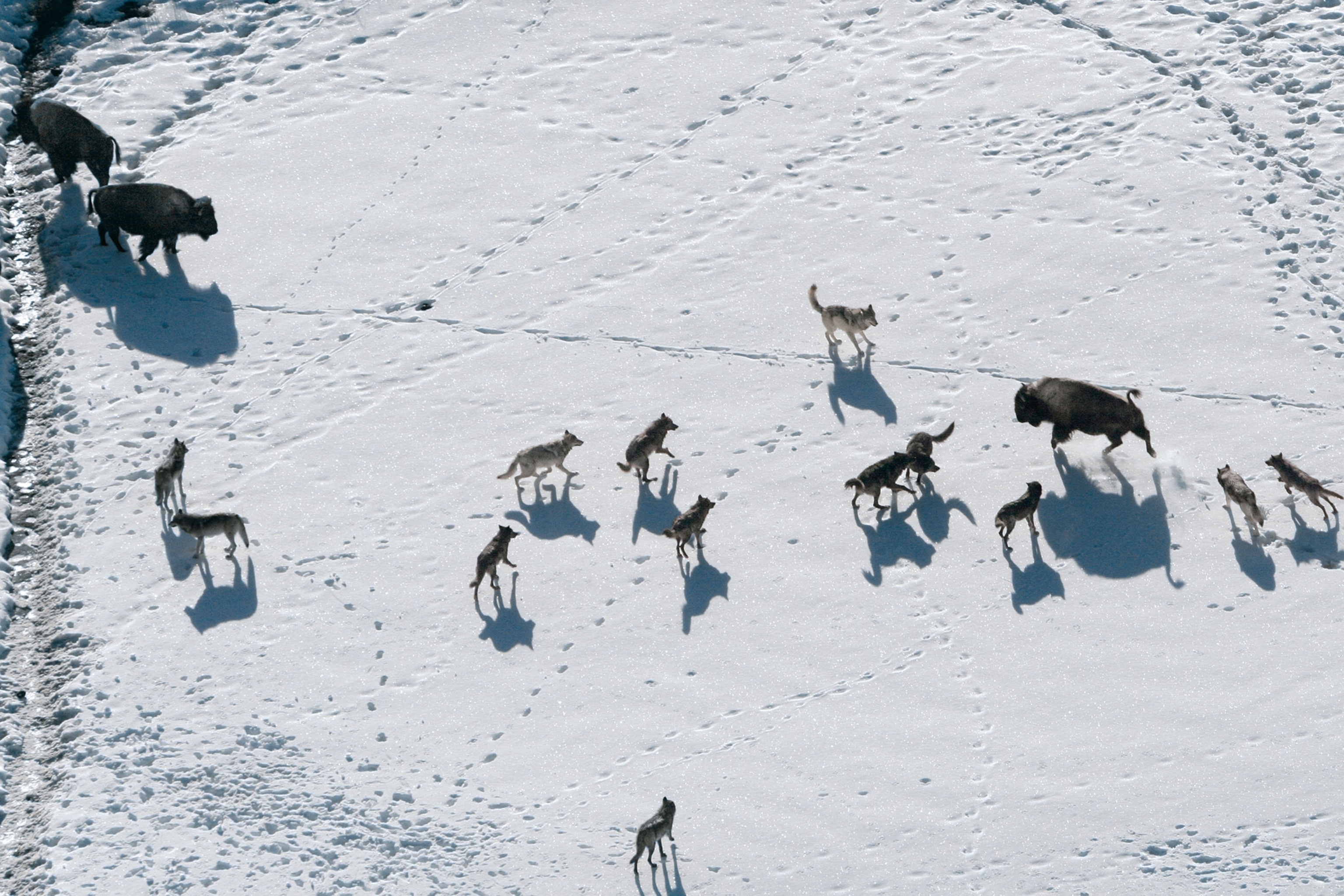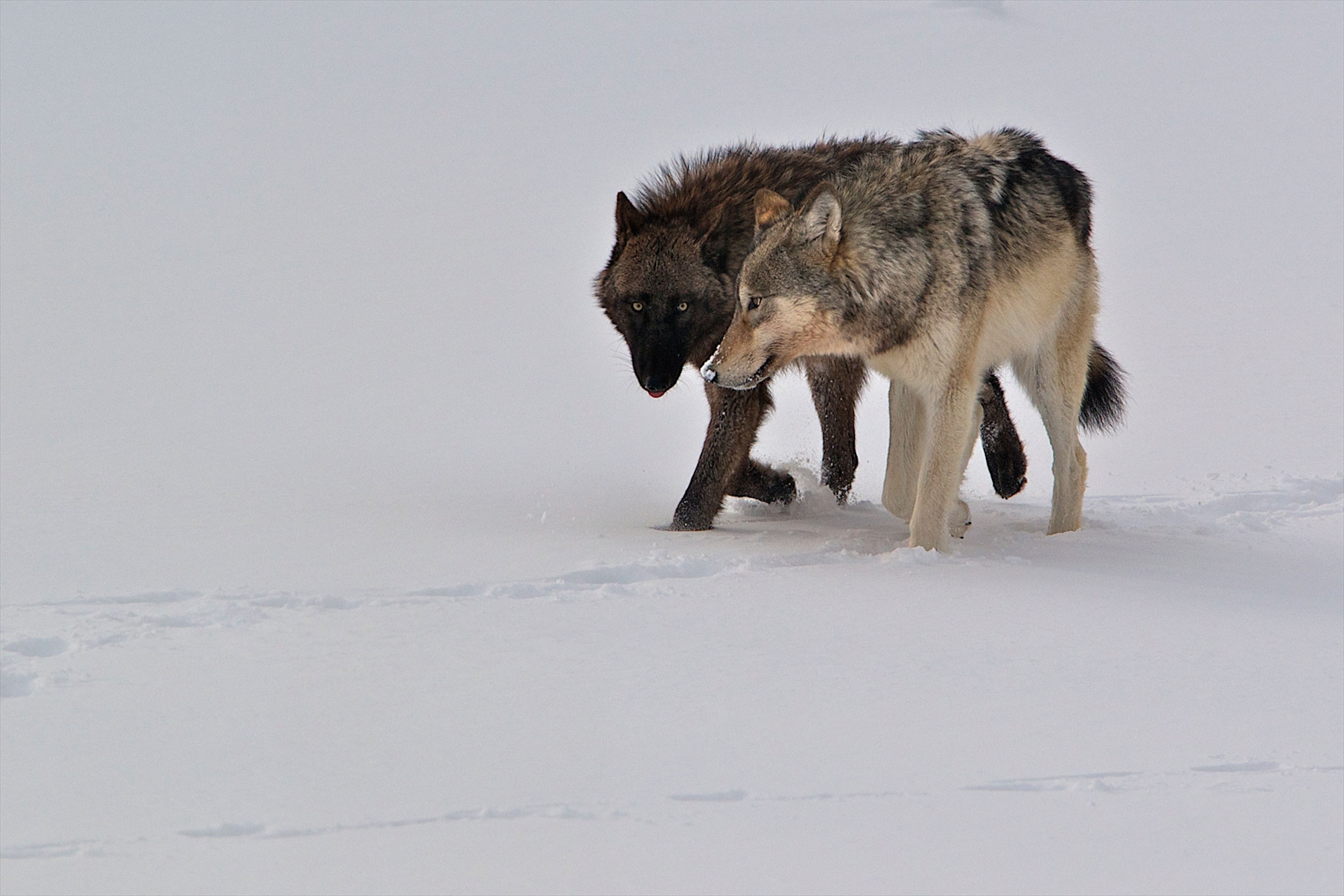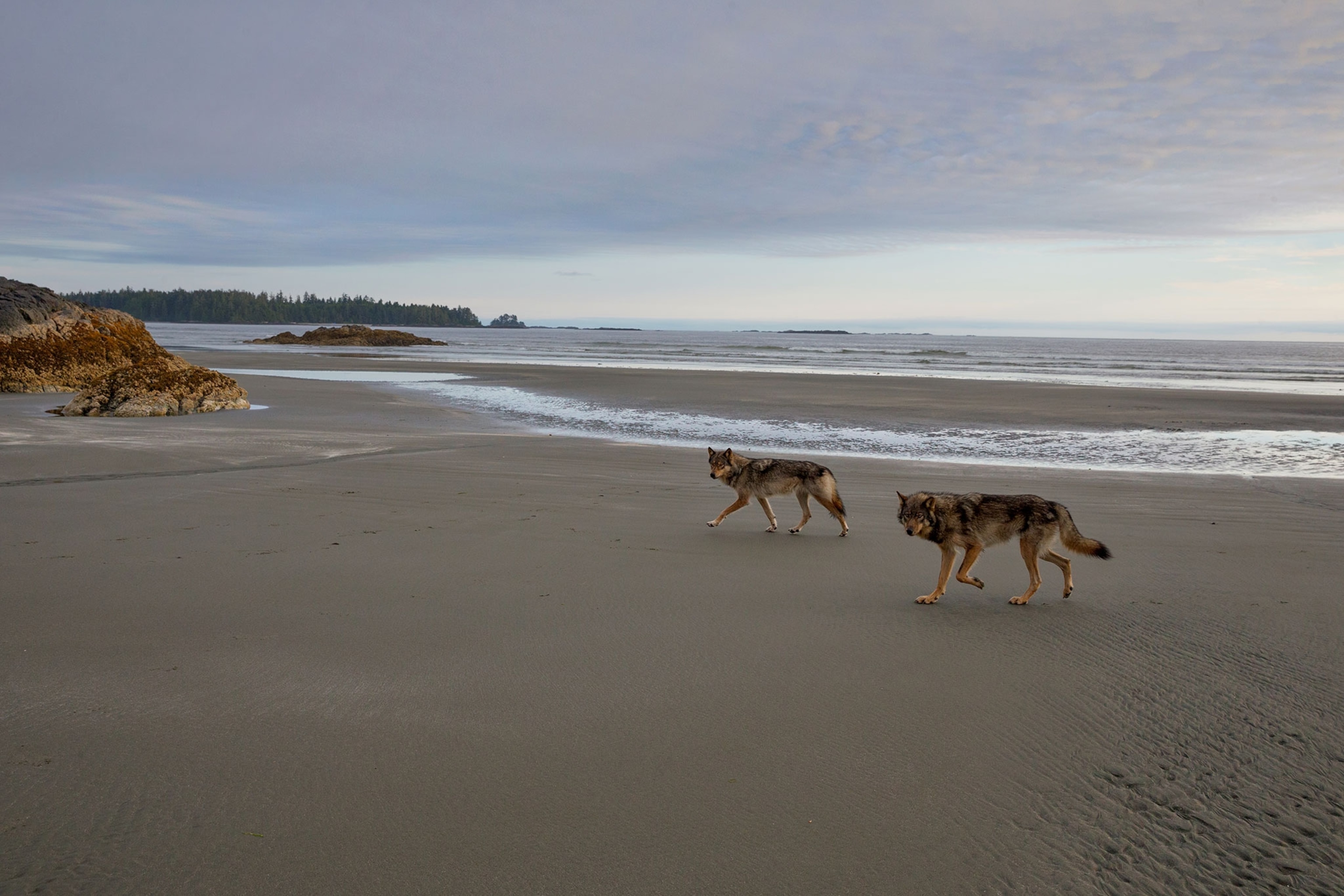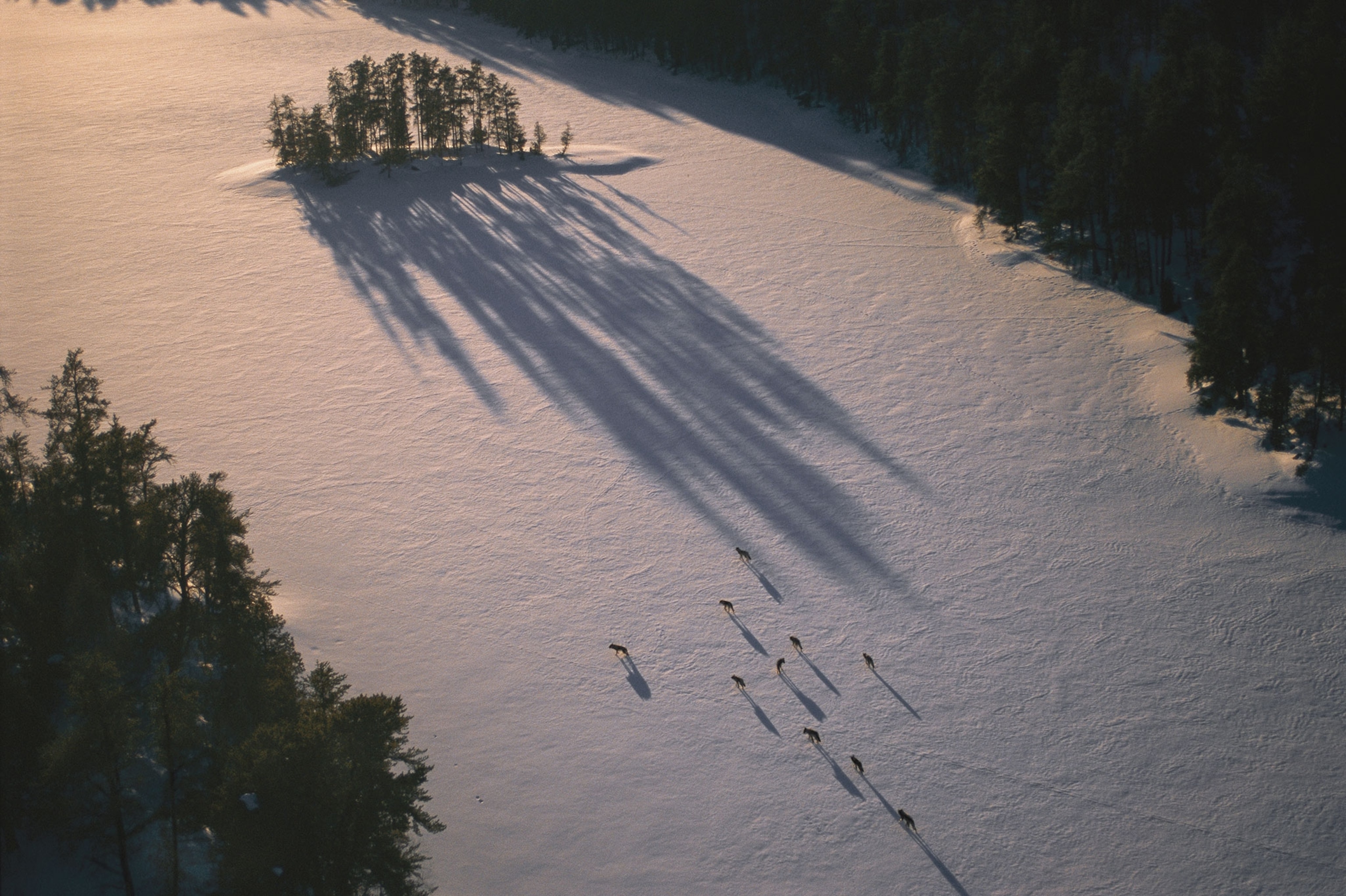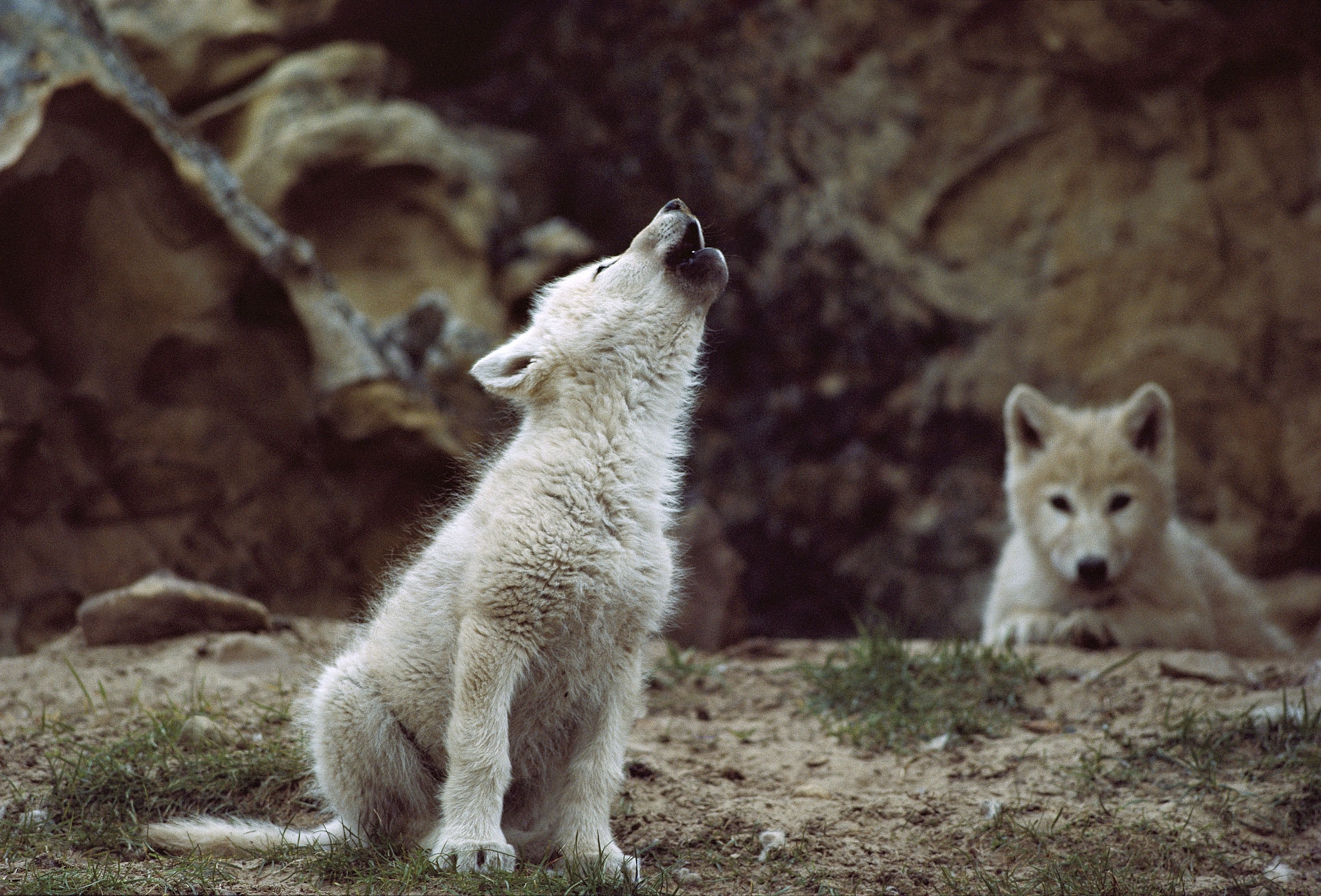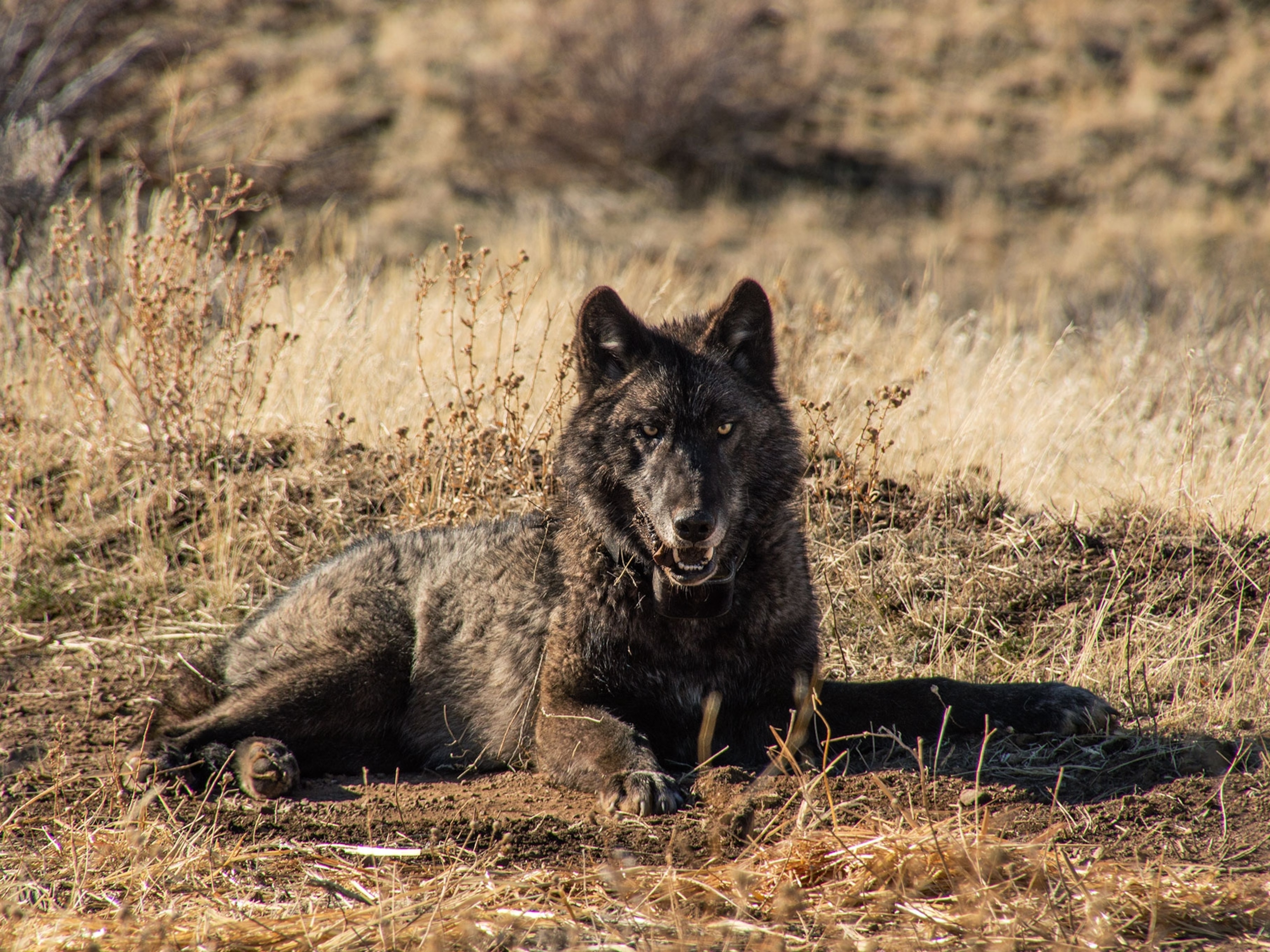
Wolves are making a comeback. Here’s where to see them
Grab your binoculars and track thriving populations in Yellowstone, Denali, and beyond.
You might say that National Geographic Explorer Doug Smith is obsessed with wolves. After all, he’s spent his entire career studying them. A wildlife biologist, he leads the Wolf Restoration project in Yellowstone National Park, trekking on foot, riding horseback, and leaping from helicopters to research and protect these native canines.
Though several scientists argue the animal’s recovery is not yet complete, gray wolves are no longer considered endangered in some states, and a 40-year conservation effort has seen their numbers boom—meaning there’s no better time to encounter them in their native habitats.
“The wolf is the poster child of wilderness,” says Smith. “When you see one in the wild, it awakens the senses and everything feels right.” Here are a few of his favorite places to spot them in the United States.
Yellowstone and Grand Teton National Parks
If you explore these majestic landscapes for three or four days, “you’ll be rewarded with more than just a glimpse,” Smith says. For the best wolf sightings, visit in summer or midwinter and search during the early morning. In Yellowstone, look for packs living in the Lamar Valley, Hayden Valley, and Blacktail Deer Plateau. In Grand Teton, head to Willow Flats. (Learn how the Yellowstone we don’t see is a struggle for life and death.)
Trip tips: Drive the Great Loop Road to pass through Lamar Valley for a chance to glimpse its local wolf pack, then head southwest to the Mount Washburn Trail, a six-mile loop to a fire lookout tower that provides a sweeping, 10,000-foot vantage point over Yellowstone. Book well in advance at Old Faithful Inn (May-October) to experience the national historic landmark for yourself. At Grand Teton, be on the lookout for other wildlife from beavers to bison, then make your way to Jackson Lake to fish, sail, water ski, and windsurf.
Denali National Park & Preserve
In this remote Alaskan wilderness—at 6.1 million acres, one of the largest national parks in the U.S.—expect fewer people and more wolves. Drivers on the Denali Park Road frequently report sightings. If you spot wolves, don’t give chase. “They’ll run away,” Smith says, “and it ruins the moment for everyone.” If you’re on foot, scout river banks for clues such as paw prints. Bring binoculars or a spotting scope to zoom in on the action. (Here’s how to do wildlife tourism right.)
Trip tips: Visit in summer, when Denali Park Road is open. You can drive the first 15 miles, then hop on a shuttle or tour bus. After a day of hiking, stay the night at Wonder Lake Campground for commanding views of Denali itself, at 20,310 feet North America’s tallest peak. Pack insect repellent to ward off the persistent mosquitoes and be sure to make use of the bear-safe food lockers available in the campground.
Boundary Waters Canoe Area Wilderness
Bundle up if you go in winter, the prime time to see wolves in this pristine part of Minnesota. Try a sled dog excursion and follow wolf tracks in the snow. During late summer, book a guided canoe trip and you may be treated to the rare sound of wolf pups learning to howl. The presence of wolves, Smith says, gives the area that “wild, north woods feeling.”
Trip tips: As its name suggests, the Boundary Waters Canoe Area Wilderness is best seen from the water. Reserve the required permits to enter and overnight, then strike off on your own or book a guided canoe tour. Motorboats are mostly banned in this massive, glacier-carved backcountry. In the winter, trade the boat for a dogsled, a pair of skis, or snowshoes to traverse the serene expanse.
- National Geographic Expeditions





